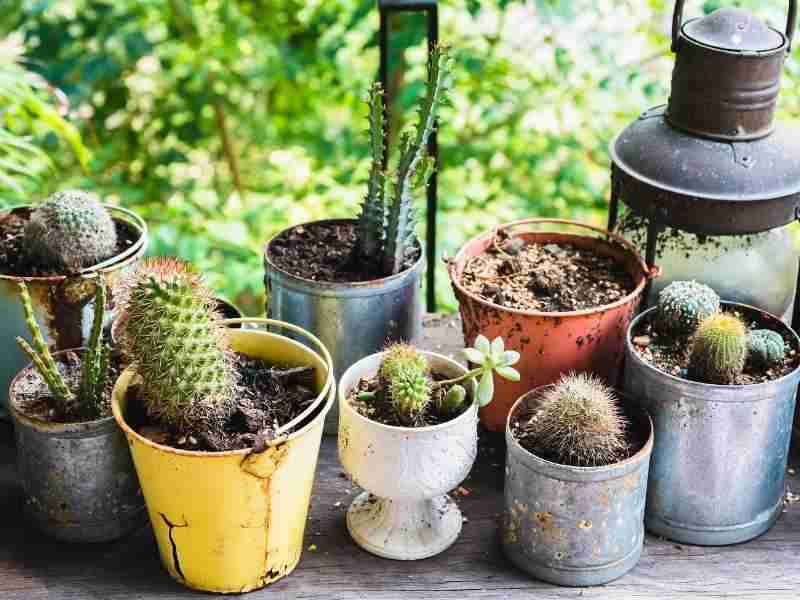When it comes to indoor gardening, few plants are as captivating or low-maintenance as cacti. However, despite their reputation for toughness, these prickly specimens demand a nuanced approach to their care, particularly when it comes to watering. Have you ever found yourself pondering how often to quench the thirst of your indoor cactus? This seemingly straightforward question can present a conundrum, especially for novice gardeners. The key lies in understanding the intricate needs of this unique flora.
The watering schedule for indoor cacti can fluctuate based on several factors, including the species of cactus, the size of its pot, the environment, and the time of year. This article will delve deep into the factors influencing indoor cactus watering, providing a comprehensive guide to developing an effective schedule.
Understanding Cactus Physiology: The Thirsty Mirage
Cacti possess a remarkable adaptation that allows them to thrive in arid conditions: they have evolved to store water in their tissues. This resilience allows them to endure extended periods without moisture. Nonetheless, overstressing this ability can lead to detrimental consequences, including root rot, which occurs when the roots sit in waterlogged soil, suffocating the plant.
Indoor cacti come in numerous varieties, each possessing unique traits. For instance, the ever-popular Echinopsis species prefers drier conditions compared to the thirstier Mammillaria. Understanding your specific cactus species will provide a clearer roadmap for watering.
Environmental Variables: A Balancing Act
The environment in which your cactus resides plays a crucial role in determining its hydration needs. Factors such as light exposure, humidity levels, and temperature can substantially influence the frequency of your watering schedule.
In brightly lit environments, for instance, your cactus may utilize water at an accelerated rate due to increased photosynthesis and transpiration. Conversely, in cooler or shadier settings, the cactus may retain moisture for extended periods. Adjusting your watering frequency to align with these variables is essential in promoting a healthy indoor environment for your cactus.
Seasonal Considerations: Nature’s Rhythm
It’s essential to recognize that cacti experience seasonal growth patterns that affect their water requirements. Generally, cacti grow actively during the spring and summer months. During this burgeoning phase, they will require more frequent watering to support their growth and blooming cycles.
As temperatures drop and sunlight dwindles in fall and winter, these plants enter a period of dormancy. During this time, your cactus will need significantly less water, allowing the soil to dry out almost completely between waterings. A common mistake among new cactus owners is to continue watering as if the plant were actively growing, which can lead to severe issues.
Crafting the Ideal Watering Schedule
So, how often should you water your indoor cactus? The answer lies in a careful evaluation of the factors discussed previously. The general guideline is to water your cactus every two to three weeks during its active growth period, ensuring the soil dries out completely between waterings. In contrast, during dormancy, you may extend the time between waterings to four to six weeks or even longer for certain species.
Utilizing proper soil and pots can also aid in establishing an effective watering regimen. Opt for well-draining cactus potting mixes, and ensure pots have adequate drainage holes to prevent water accumulation at the base.
Signs of Overwatering: The Silent Threat
One of the challenges in caring for indoor cacti is recognizing the signs of overwatering. Unlike other plants that might visibly wilt or turn yellow, cacti have more subtle indicators. Look for signs such as mushy stems, discoloration, or a foul smell coming from the soil, all of which suggest that your cactus may be suffering from too much moisture.
In contrast, underwatering can also present its own set of symptoms, including wrinkled tissue or a generally shriveled appearance. A well-balanced watering approach is vital in avoiding these pitfalls.
Tools and Tricks for Success
To simplify the task of monitoring soil moisture levels, consider investing in a moisture meter. This handy tool can help eliminate guesswork, indicating precisely when it’s time to water. Additionally, employing a calendar or a simple reminder on your phone can assist in maintaining a regular schedule.
Conclusion: The Art of Care
Caring for indoor cacti requires a delicate blend of observation, knowledge, and intuition. While the prospect of developing a consistent watering schedule may seem daunting at first, understanding the individual needs of your plant makes it much more manageable. Remember, every cactus is unique, and patience is key. By following the guidelines provided above and closely observing your plant’s responses, you will cultivate a thriving indoor cactus garden that brings a distinctive touch of the desert into your home.





Leave a Comment